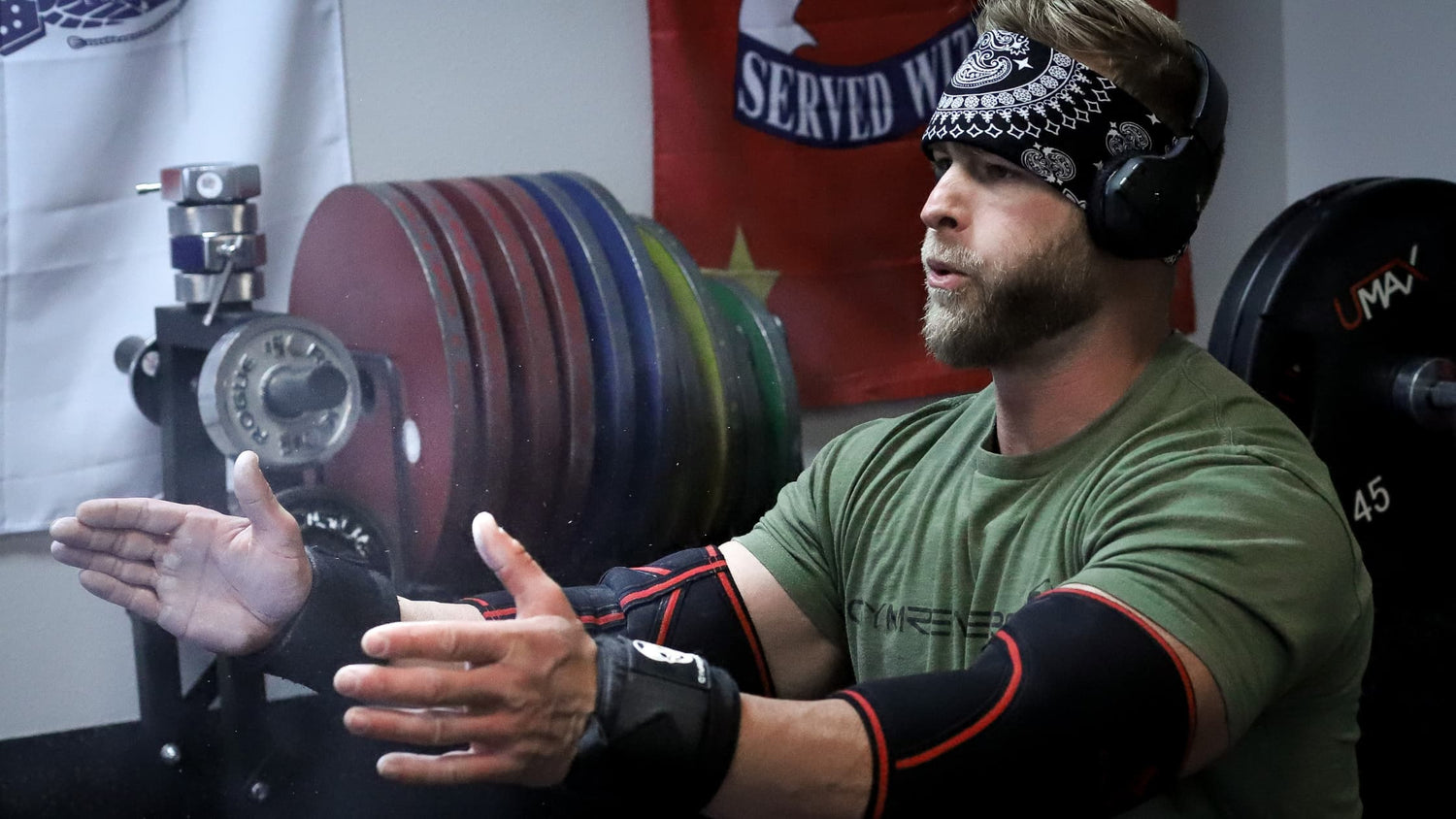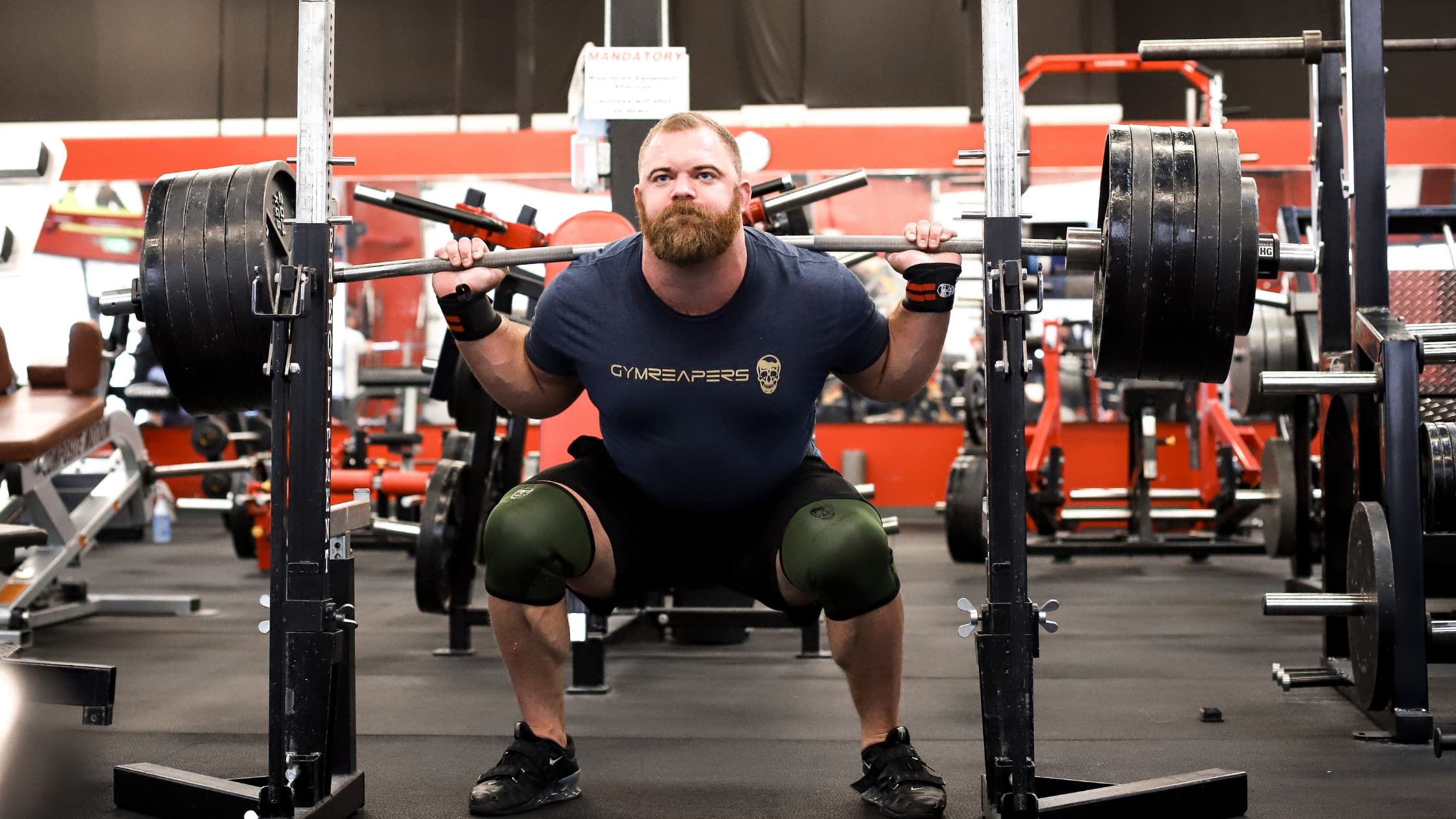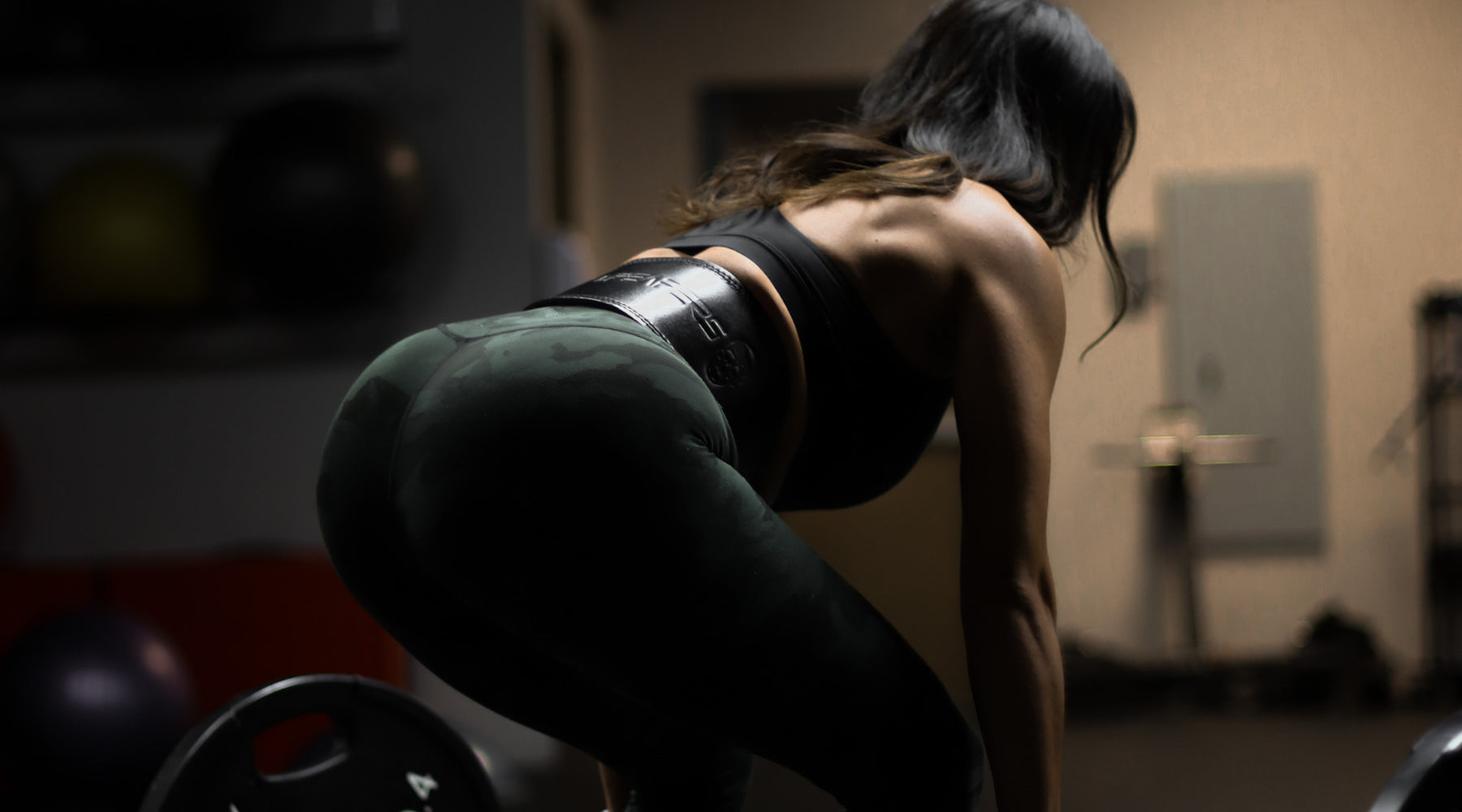Are you doing everything you need to build a bigger bench press, but aren’t going up in weight? It’s frustrating as hell and there’s a good chance you have hit a plateau. Even if you’ve increased the number of times you bench during the week, you’re probably not seeing a massive increase in weight.
Why? There’s a chance you’re doing something wrong during those extra bench press days. Make small changes (more on that later) to ensure you continue to increase your bench and muscle mass.
By now you know that increasing your bench press is incredibly important especially if you want to build strength, size, and power in your chest. The next time one of your gym bros asks how much you bench press, you won't have to make up a number. You'll tell them your actual max because of the tips in this post.
Today, we’ll be covering how to get out of a plateau, a bit of chest anatomy, how proper form and bench setup will help you increase your bench press, and finally other proven methods that help with size and strength.
What muscles does bench press work?
First up, it’s important to know what muscles you’re trying to grow through bench press. Let’s cover a small portion of the chest muscle and its anatomy.
There are two main muscle heads within the pectoral region. One being the sternal head (the meat of the chest) and the other being the clavicular head (the outer region near the shoulders).
Why are they important? The two muscle heads combine to move the shoulder joint which is critical for the overall development of your chest.
How? The chest muscles are supported through shoulder joints and ligaments, as well as the elbows and triceps (to name a few).
As you’re working on increasing your barbell bench press, the development and maintenance of these other supportive muscle groups are essential. Keep that in mind as you continue navigating through this guide.
What can I do to increase my bench press?
Doing a manageable amount of reps time after time or each chest day won’t lead to a bigger chest. Sure, if you’re just starting you’ll see definition due to muscle growth and development, but long term it’s not a good strategy.
So what can you do to increase your bench press? I eluded to this a bit earlier, but the simple answer is to incorporate exercises that will strengthen the muscles needed to lift heavier.
Seems pretty straightforward, but what exercises will help you increase your bench press? Below are the four exercises you should be doing to expand your bench press, giving you more strength, control, and power.
1) Barbell or Dumbbell Rows
Developing and increasing the size of your spinal erectors (the muscles that run along either side of your spine) and your Latissimus Dorsi (lats) is an important part of your overall bench stability and power.
The value of strengthening these muscles is huge because they control a lot of your posture. Consequently, engaging your upper back and lats will help you maintain better control and stability at the start of your bench. Here’s a breakdown of the process, step by step so you can crush it next time you workout:
- Decide whether you want to use dumbbells or a barbell
- If you’re using a barbell, use the resources from a squat rack
- If you’re using dumbbells, you can skip the first two steps below
- Pick an adequate weight and load the barbell
- Your grip on the barbell should be shoulder-width
- Keep your feet firmly planted with your legs shoulder-width apart
- Bend your knees slightly as you hinge at the hips, keeping your torso at about a 45-degree angle with the ground
- Next, squeeze your shoulder blades as you bend your elbows and shoulders to perform a rowing motion
- Keep your core tight, making sure you only use your upper back to move the weight
- Repeat the process for 4 sets, up to 15 reps during each set

2) Shoulder Press
Ever get sore shoulders after finishing bench press? If you said yes, that’s because you’re using your anterior deltoids (front top portion of your shoulders) a lot.
The shoulder muscles are a tremendous component of your bench press — the stronger they are the better. If you said no, then you must be sore elsewhere or didn’t have a heavy enough workout.
Here’s a refresh of the shoulder press movement, step by step, so you can perform it without trouble and be well on your way to building the strength of the anterior deltoids.
- Pick two dumbbells with an adequate amount of weight
- Keep your feet firmly planted with your legs shoulder-width apart
- With your dumbbells in hand, move them up to shoulder height
- Keep your palms slightly turned into each other and elbows bent at 45 degrees
- Keep your core tight, making sure you only use your shoulders to control the weight and movement
- As you straighten your elbows and shoulders up, press the dumbbell overhead
- Return to the starting position and repeat the process for 4 sets of 12 reps
3) Dips (Weighted or Normal)
Triceps play a pivotal role in your bench-pressing abilities. An incredible way to lock out strength and performance is accomplished by doing dips. There are several different ways dips can be done, especially for strength and power athletes.
Try incorporating dips to strengthen your triceps, as they are vital for bench presses and can help enhance muscle hypertrophy for overall upper body strength.
As you gain strength and develop your upper body strength, consider using a dip belt and doing weighted dips. A dip belt can help you add size and definition to your entire upper body.
Take a look at the video below for the step-by-step on how to perform dips. By doing dips, you can improve your overall strength on the bench press.
4) Dumbbell Pullover
Last on the list are dumbbell pullovers. This movement is more focused on developing and strengthening your form and posture (more on that topic a bit later). In addition to proper posture, the purpose of dumbbell pullovers is two-fold.
The first benefit of this move is that it strengthens your chest (the pectoralis major). At the same time, it also helps strengthen your lat muscles. That’s why I’ve saved this exercise for last today. You get the benefit of strengthening two muscle groups, plus they’re kind of fun to do.
- Pick one dumbbell with an adequate amount of weight
- Keep your feet firmly planted on the ground while your shoulder blades are resting on a flat bench
- Lift your hips up so that they’re parallel to the ground and squeeze your glutes
- Keep your core tight, making sure you only use your arms to control the weight and movement
- Pick up a single dumbbell and hold it directly over your chest with both hands (this is the starting position -- if you need help have someone hand you the dumbbell)
- Next, lower the dumbbell back and behind your head -- as if you were stretching
- Do a slight pause while maintaining a firm core
- Return to the starting position and repeat the process for 4 sets of 12 reps
The proper form and bench setup
Now that the assistive movements for a stronger bench press have been covered, we can get to the critically important section about form and bench press setup. If you take nothing else from this article, I hope you pay attention to this section. Even if you’re pretty confident in your bench press, try out the advice I’m going to share with you.

Where do I position my body for bench press?
The first step is loading your barbell with enough weight that will give you a bit of a challenge. If you don’t have a spotter or gym partner, setting up on a power rack is highly recommended. The reason being mainly for safety in case you fail and need to dump the weight.
Make sure you’ve adjusted the safety pins to the proper height so that they can catch the barbell if you fail. Once you’re set-up, here’s how to position yourself for a proper bench press:
- Lie down on the bench far enough so that your eyes are directly below the bar
- Lift your chest slightly while tucking your shoulder blades down (and squeeze)
- Position your hands slightly wider than shoulder-width apart on the bar (put your pinky finger on the grooves in the bar)
- Wrap your thumbs around the bar and squeeze it so that it can’t move in your hands
- If your wrists bend back it means you’re gripping the bar too high in your hand/palm
- Arch your lower back slightly and plant your feet into the floor (make sure they’re flat on the floor)
- Your feet should be planted shoulder-width apart right under your knees
Let’s pause for a moment here because descending the barbell is critical in building your chest and ensuring you have proper bench press form. Your elbow placement and position should be tucked at a 50 to 60-degree angle, instead of too far or too close to your body. A common mistake is having your elbows flared out, which can cause problems and discomfort in your shoulders.
Improper elbow placement can lead to shoulder impingement, which accounts for up to 65% of all shoulder pain complaints according to the Cleveland Clinic.
Now let's continue with the descent of the barbell bench press:
- Straighten your arms as you unrack the weight and lift the bar down horizontally
- Keep your forearms vertical as you lift the bar down to your mid-chest
- Remember to keep your elbows tucked as you’re pressing down
- Keep your butt on the bench with a slight arch in your lower back and hold your breath
- Push up without pause as if you’re pulling the barbell apart -- complete one rep and exhale at the top
- Your bar path should be a diagonal line from your mid-chest to your shoulders
- Once finished, rack the weight back, locking your elbows as you move the bar back on the rack
Variations to the bench press
Targeting the chest muscles for growth is key and there are several variations you can do when you’re bench pressing. Is the decline bench press a must for a chest workout? Should I use an incline or flat bench? Both are valid questions and there is no wrong answer.
Take the incline bench press, for example, it emphasizes a specific chest muscle called the clavicular pectoralis. It sits between the collarbone and the ‘top’ of your chest. This muscle can be hard to target and it takes a long time to grow. However, the best way to keep developing it is to do incline pressing movements.

When doing an incline barbell bench press, the bench should be set at an incline between 30 and 45 degrees. Remember to use a similar technique and form as you would for a flat bench, but with a slight variation. On the descent, the bar should pass your chin and make contact with your collarbone.
The decline barbell bench press is effective for building the lower portion of the chest, but there are other alternatives to it. For example, you can try to decline dumbbell bench press, cable flyes, or even dips to help increase the strength and size of your lower portion of the chest muscles.
5 ways to boost your bench press
Aside from the proper form, there are other methods that you can use to improve your bench press. Some of these methods are extremely helpful to do outside of the gym as well and are an effective way to maximize your bench press performance and chest size.
1) Get in the right mindset
Being mentally prepared for what’s ahead with the right music is proven to increase your force production (1). If you’re excited and visualize exactly what you need to do, the mind to muscle connection will be incredible. Avoid distractions such as your phone to elevate your mood so you can perform at your highest level.
2) Lift heavy weight and explode up
What does heavy weight lifting mean? It can be different from person to person, but you can gauge your range by starting with 80% of your 1RM, do 4 to 6 reps to start, and increase the weight and reps as you go.
As you move the bar back up, explode by moving it quickly. There is evidence that this motion of quickly exploding results in greater power (2).
3) Pull the bar apart (as you descend)
You may have heard of this technique because it’s been around for years. The idea here is to make sure that you’re controlling the bar as you descend toward your body, without letting it just drop. While you’re lowering the barbell, try to pull it apart with your chest while maintaining the shoulder blades in place.
4) Increase your nutritional intake
The most common and most often heard advice is to eat. There is value in this because no matter how much you train, without proper nutrition the results simply won’t show.
Eating enough calories to build strength and size is probably the most important thing you can do. It’s not always easy, but get mentally prepared and your meals will pay off in the long run.
5) Consider using supportive gear
As you improve your bench press form, you’re bound to go up in weight. Sometimes it’s helpful to have supportive gear to help push you to a new level.
Using wrist wraps can help stabilize your wrist joints so you have better control of your wrist and grip on the barbell. Another really popular piece of gear is elbow sleeves, which support your elbow joints and increasing blood flow for maximum functionality.
RELATED POST: Common Wrist Wrap Questions
Cooling Down
Increasing your bench press is incredibly important especially if you want to build strength, size, and power in your chest.
Having covered how to get out of your plateau, a bit of chest anatomy, how proper form and bench setup will help you increase your bench press, and other proven methods that help with size and strength, you’re now equipped to get incredible results.
The next time one of your gym bros (or your gym crush) asks how much you bench press, you’ll be able to impress them with your answer.
References
- (COVID-19), C., Health, E., Disease, H., Disease, L., Management, P., & Conditions, S. et al. (2021). Music Does Give Your Workout a Boost. Retrieved 29 January 2021, from https://www.webmd.com/fitness-exercise/news/20200108/music-does-give-your-workout-a-boost#1
- Pryor, R., Sforzo, G., & King, D. (2011). Optimizing Power Output by Varying Repetition Tempo. Journal Of Strength And Conditioning Research, 25(11), 3029-3034. doi: 10.1519/jsc.0b013e31820f50cb














Leave a comment
All comments are moderated before being published.
This site is protected by hCaptcha and the hCaptcha Privacy Policy and Terms of Service apply.